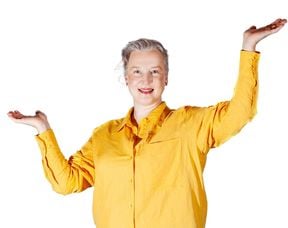Oops: A circular economy workshop abuzzed activity and ejected personal biases

‘After a Sunday-evening football practice, a teammate wanted to talk about work. At the time, she was heading a research project at the School of Chemical Engineering, while I was a researcher at the School of Arts, Design and Architecture.
My friend’s research had become stuck and she was looking for a fresh perspective. Following our chat, she asked, to my surprise, for me to join the project. In what way could an artist and visual arts teacher like me collaborate with engineers?
The research focused on promoting the circular economy in the construction industry. A wall panel made of steel and mineral wool was being examined with the aim of lengthening its life cycle and discovering new use applications. These panels were used as material to build, for example, warehouses, but turned into pure waste once it was time to dismantle the structure.
Workshops with participants representing many different fields were arranged to tackle the issue. At the first two meetings, we immersed ourselves in the subject and brainstormed ideas.
The goal of the third meeting was to, at my lead, develop the product through the means of art, to alter its form and use concretely.
I prepared for the workshop much more than usual when teaching, yet I still went there with doubts on my mind. Maybe it would not work out.
Some fifteen people were taking part, including a flight mechanic, nurse and an engine driver, in addition to the students, engineers and artists. I wondered what this meeting of different ways of thought would result in.
I suspected I’d have to motivate and cajole the participants to sink their hands in the dirt, to get involved in a creative effort, which was perhaps unfamiliar to them.
But the workshop was abuzz with activity in no time! The gang were busy sketching, painting and drawing. The wall panels didn’t know what hit them, getting worked on by hand and machine.
Their creations included a green wall, a fireplace module and a birdhouse. An exhibition was arranged to showcase the workshop’s output.
I suddenly realised that, although we used different concepts to talk about things, we were all enthusiastic about innovation, experimentation and development when given the opportunity to engage. The ways in which artists, engine drivers and engineers think and work are surprisingly similar.
I continue to play football with my friend, who is now a senior expert on sustainability solutions at Sitra, the Finnish Innovation Fund, while I have returned to Aalto to work in a new, strategic position.
Multi- and cross-disciplinary collaboration is surprisingly fruitful. It could be that Nani Pajunen and I got a peek of the headwaters of radical creativity back then.’
This article was published in the Aalto University Magazine issue 29, October 2021.
Read more news

DeployAI Partners Gather for Heart Beat Meeting in Helsinki
The European DeployAI project's partners gathered for the Heart Beat meeting hosted by Aalto University Executive Education in Helsinki.
Aalto computer scientists in ICML 2024
Computer scientists in ICML 2024
In low-hierarchy organisations, even key policy issues are discussed in Slack
In a recent study, Aalto University alumn Lauri Pietinalho, a visiting scholar at New York University's Stern School of Business, and Frank Martela, an assistant professor at Aalto University, investigated how low-hierarchy organisations deal with shared policies in confrontational situations and how authority functions within them.